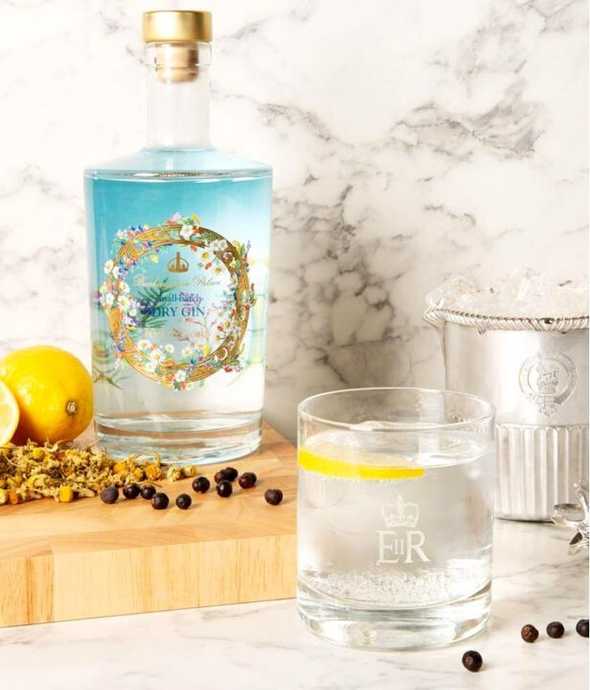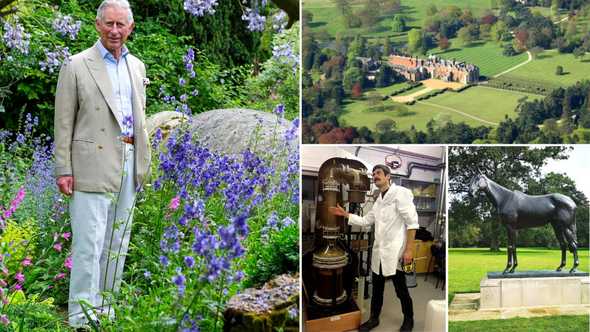Spirit of the English Garden
October 21, 2021
Buckingham Palace small batch Dry Gin; the first royal gin
The pandemic spared no one. Not even the British Royal famil. They were forced to close Buckingham Palace and other Royal Homes to the public. Royal Collection Trust, which manages the public opening of the Queen’s official residences, estimates total losses to exceed US$ 37million annually. It has been speculated but never officially confirmed that the launch of Buckingham Palace Gin was an initiative to top up the shortfall.
The Windsors have long preferred gin as their spirit of choice. Queen Elizabeth the Queen Mother liked her gin with Dubonnet before lunch. HM Queen Elizabeth II shared her mother’s preference. She also enjoys
Dry Martini, the choice of her first prime minister, Sir Winston Churchill. So, in the unlikely event of you clinking glasses with the British royalty, the pour would most likely be gin – any of the ones listed below. And if that royal invitation remains elusive, just buy the gin on your next trip to London.
Buckingham Palace Gin
Buckingham Palace has 43 acres of gardens with 30 species of birds and 250 of wildflowers, with James I planting the first mulberry tree. With all the botanicals on hand, the next logical step was making gin. The result was a spirit infused with citrus and herbal notes derived from 12 botanicals. Several of which are from Buckingham Palace garden, including lemon verbena, hawthorn berries, bay leaves and mulberry leaves.The first Royal gin, launched in 2020, is bottled at 42% abv in 700ml bottles and is available online at £40 or at Royal Collection Trust gift shops. All profits from sales go to the Royal Collection Trust that funds the care and conservation of the Royal Collection.
For the perfect thirst-quencher, the recommended method is to pour a measure of an ice-filled short tumbler, top it up with tonic and garnish with a slice of lemon.
Hillsborough Castle Special Edition Shortcross Gin
Following Buckingham Palace’s lead, The Queen’s Northern Island residence, Hillsborough Castle and Gardens, has also launched its limited-edition tipple – a gin infused with hand-picked rose petals from the castle’s Granville Rose Garden and blended with apples and pears from the castle’s recently-restored Walled Garden. The final recipe is reminiscent of summer rose gardens with a long, sweet citrus and smooth oily finish — a limited run of just 400 bottles (700ml; £40) ; for sale only online.
Highgrove Gin
Produced at Prince Charles’ Highgrove Estate in Tetbury, Gloucestershire, it retails exclusively at the Fortnum & Mason, the Royal grocers in London’s Piccadilly. Fortnum & Mason calls it ‘A true field-to-glass gin, with Highgrove at its core’. The gin is truly evocative of an English country garden, with lemon balm, thyme and rosemary bringing herbal complexity to pair with earthy Juniper and bright, fresh citrus.
The Estate approached The Oxford Artisan Distillery (TOAD) to create a gin representing Highgrove’s kitchen garden. Head Distiller Cory Mason’s task was to tell a story about Highgrove, “Traceability is hugely important to the consumer and gives authenticity to the brand. We achieved that by sourcing the grain to produce the neutral grain spirit and the key botanicals from a single estate.”
He adds, “The recipe development was a complex process. First, we experimented on extracting flavours from each botanical individually. We then brought them together as a balanced representation of the terroir. We also distilled key botanicals and deconstructed the flavours to achieve an expression of the garden in a bottle.”
Prince Charles, he says, was the head taster, “When I sent samples to the Prince, I asked him to tell me what he liked about each of them to help me picture the ultimate taste we were looking for.” The development of this gin was a collaborative partnership between the distillery team in Oxford and the Garden team at Highgrove; the gin was launched in August 2020. Cory concludes, “It is a traditional gin – elegant and refined with the complex herbal notes of an English garden. It has three key herbs: a hint of lavender on the nose, sage for extra depth of flavour and Highgrove thyme for further character.”
“Highgrove Gin (700ml; £40) goes well with a light tonic,” says Susan Roberts, Head of Brands at TOAD, adding, “It is the perfect celebration of the quintessential English country garden. There are many garnish options: lemon zest makes it zing for summer, but an apple slice brings the rain to Highgrove on an April morning. We love that the gin changes with the season.”
Sandringham Gin
The spirit is produced by Whatahoot, a distillery launched in a barn by Jason and Nicky Crown while they were tenants on the Sandringham Estate. They have since moved to King Street in the heart of the historic Kings Lynn. Whatahoot worked hand-in-hand with the Head Gardener and Sandringham Estates Team to develop a unique gin featuring flavours that speak of the history of the Estate. Botanicals include Sharon Fruit, a woody tree related to ebony (Chinese Persimmon) and foliage from myrtle plants. The myrtle plants on the Estate originate from a cutting taken from Princess Alexandra’s wedding bouquet on her marriage to Prince Albert Edward (King Edward VII and Queen Alexandra).
Sharon Fruit grows in the Walled Garden at the end of a range of glasshouses, built on the winnings of the famous racehorse, Persimmon, owned by King Edward VII. Trained by Richard Marsh with John Watts as the jockey, Persimmon won the 1896 Epsom Derby and St ledger, and in 1897 the Eclipse Stakes and the Ascot Gold Cup. And that is this writer’s personal link to this gin (Editor’s note: John Watts was the great, great, great, great maternal grandfather of Laurence Civil, the writer).
Combined with traditional botanicals, these two local and sustainable flavours from the Royal estate deliver a distinctive full-bodied, dry gin with rich juniper tones and a lingering citrus finish. Distilled in small batches (500 ml; £50), it is only available through the Sandringham Estate website.
(Clockwise from left) Prince Charles in the gardens of the Highgrove Estate – also the head taster for the Highgrove Gin; Sandringham Estate; Persimmon the race horse whose winnings paid for the glasshouses on Sandringham estate; Highgrove Garden’s Head Distiller Cory Mason. All images: Royal Collection Trust

